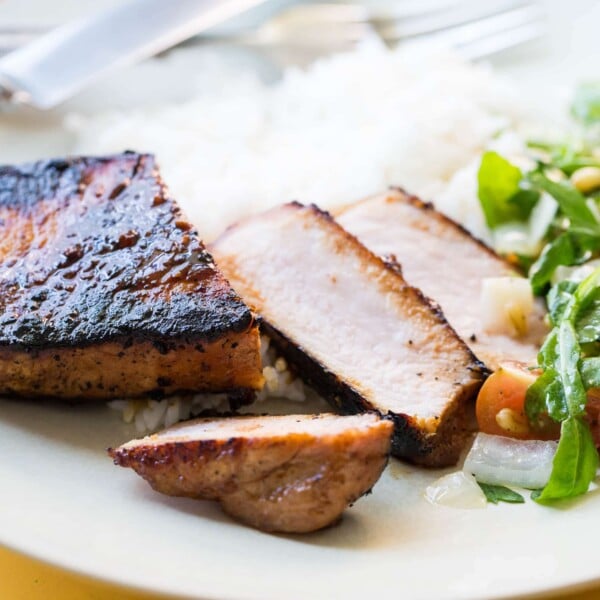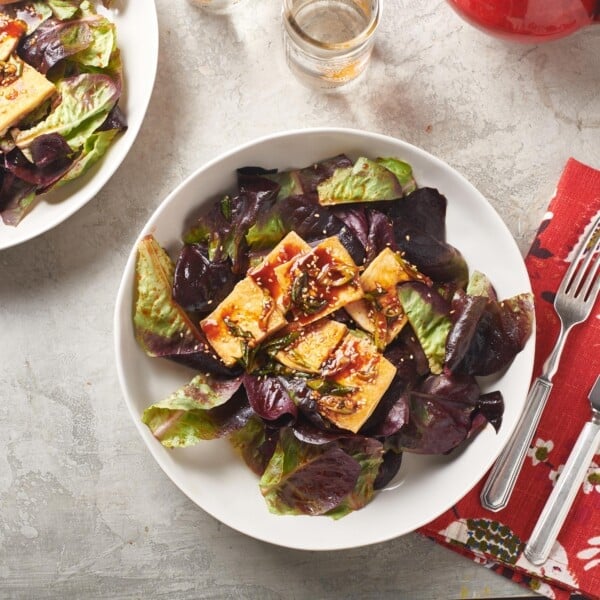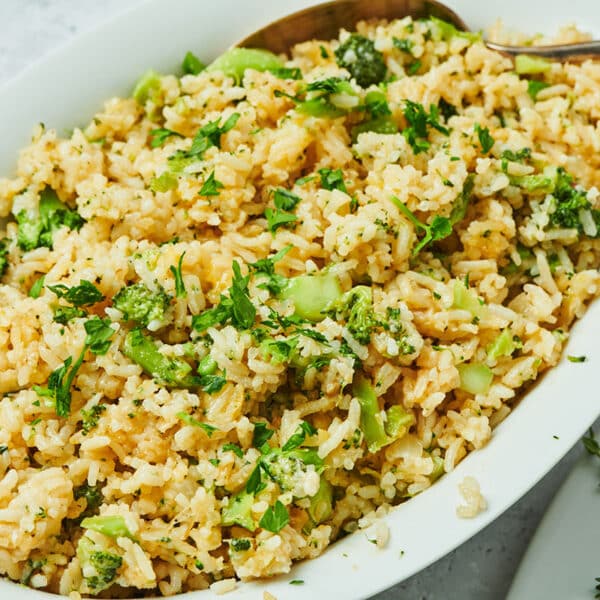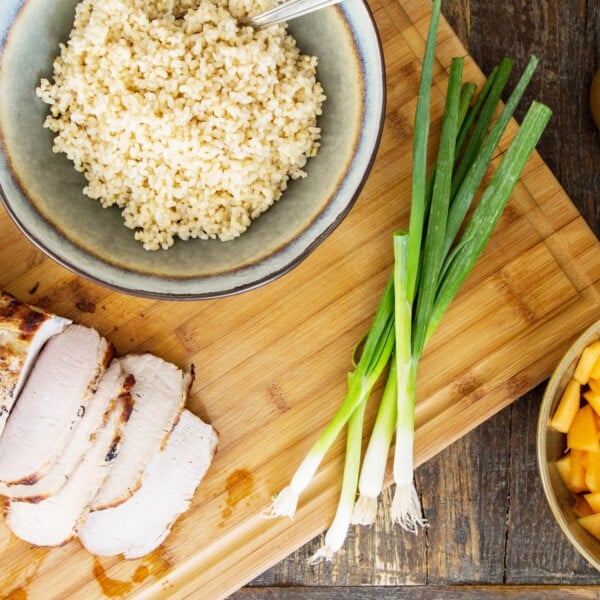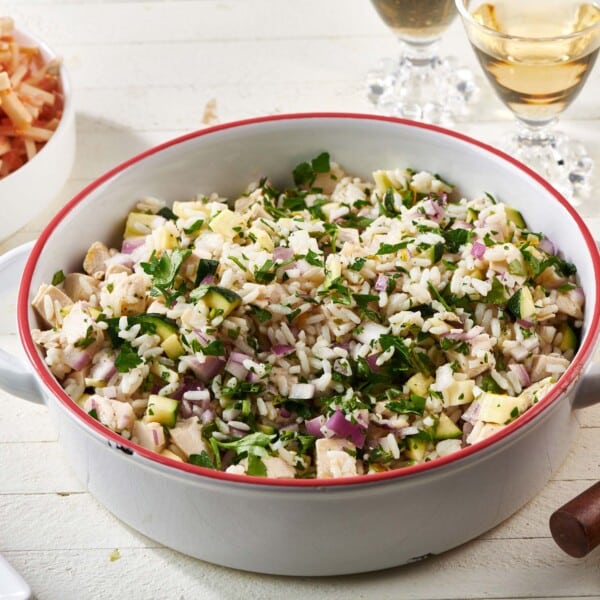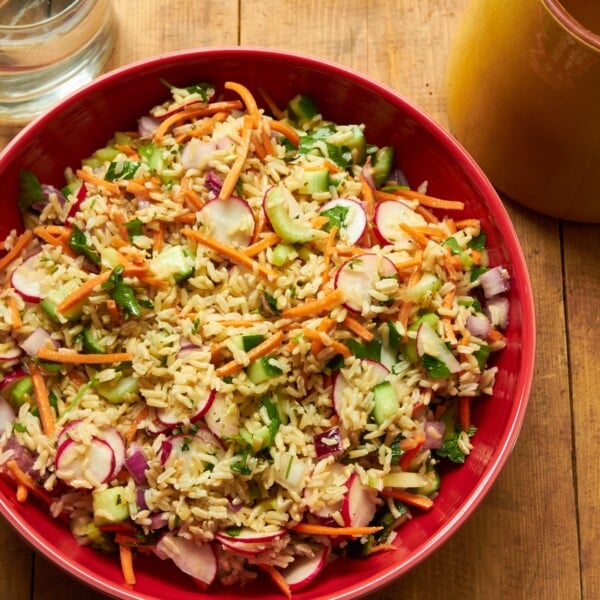Kimchi Fried Rice
on Dec 26, 2021, Updated Apr 19, 2024
This post may contain affiliate links. Please read our disclosure policy.
Kimchi fried rice is a mix of all of the flavors that make Korean food so amazing, and a great way to use leftover rice.
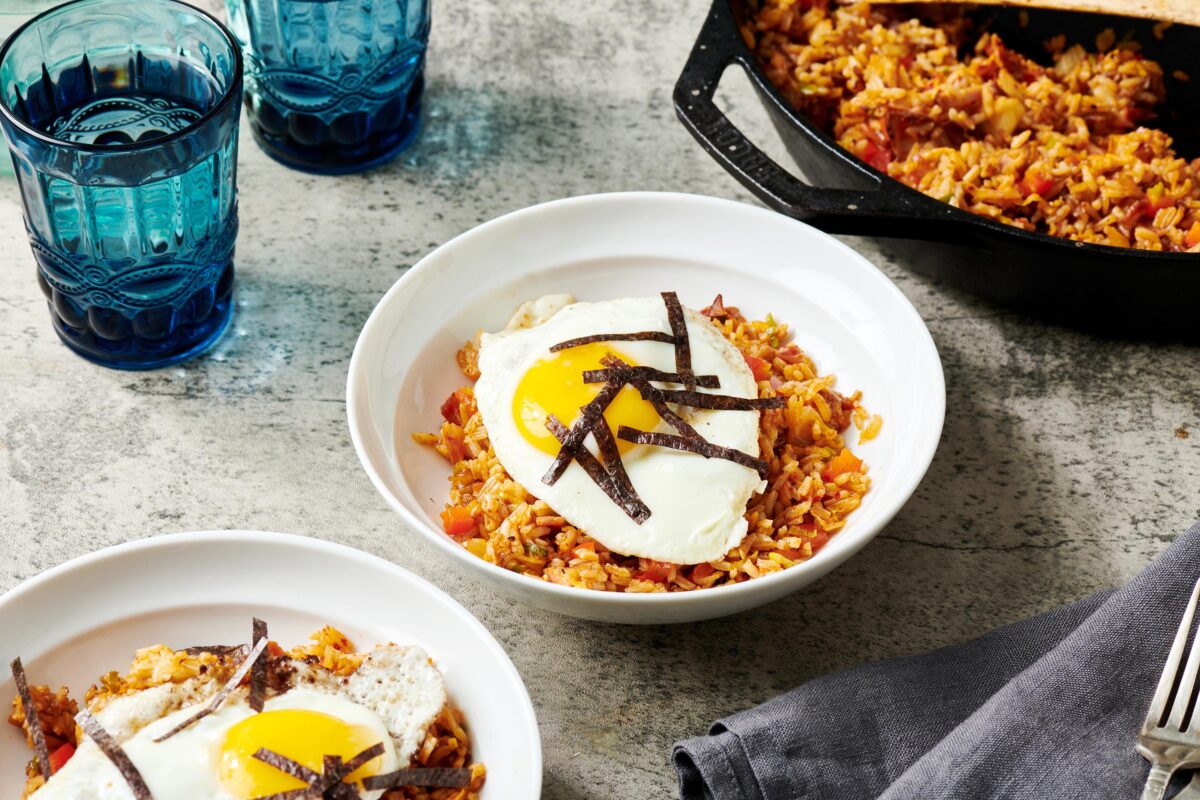
Can we give a full-on love wave to fried rice? If I had to pick one way that I put leftover rice to work consistently, it’s stir-fried rice. I actually get a little pissed if my family eats all of the rice when I make it or we order takeout because then there will be no stir-fried rice in the future. Come to think of it — they should be more prudent and prescient.
Korean Fried Rice
There are fried rice dishes in many cuisines, from Japanese (also do try Takikomi Gohan with Chicken, another amazing Japanese rice dish) to Chinese to Korean.
Some of the ingredients that seem most distinctive to the Korean-style fried rice are sesame oil, Spam or another pork product, and kimchi. Portions of Kimchi Fried Rice are often topped with a fried egg. Read through the recipe and get a handle on the timing, and you can fry up the eggs as you finish cooking the rice. The addition of the egg makes this into a very satisfying lunch or dinner. Or breakfast, come to think of it. If you’re feeling frisky, throw a slice of Grilled Pineapple on top!
Table of Contents
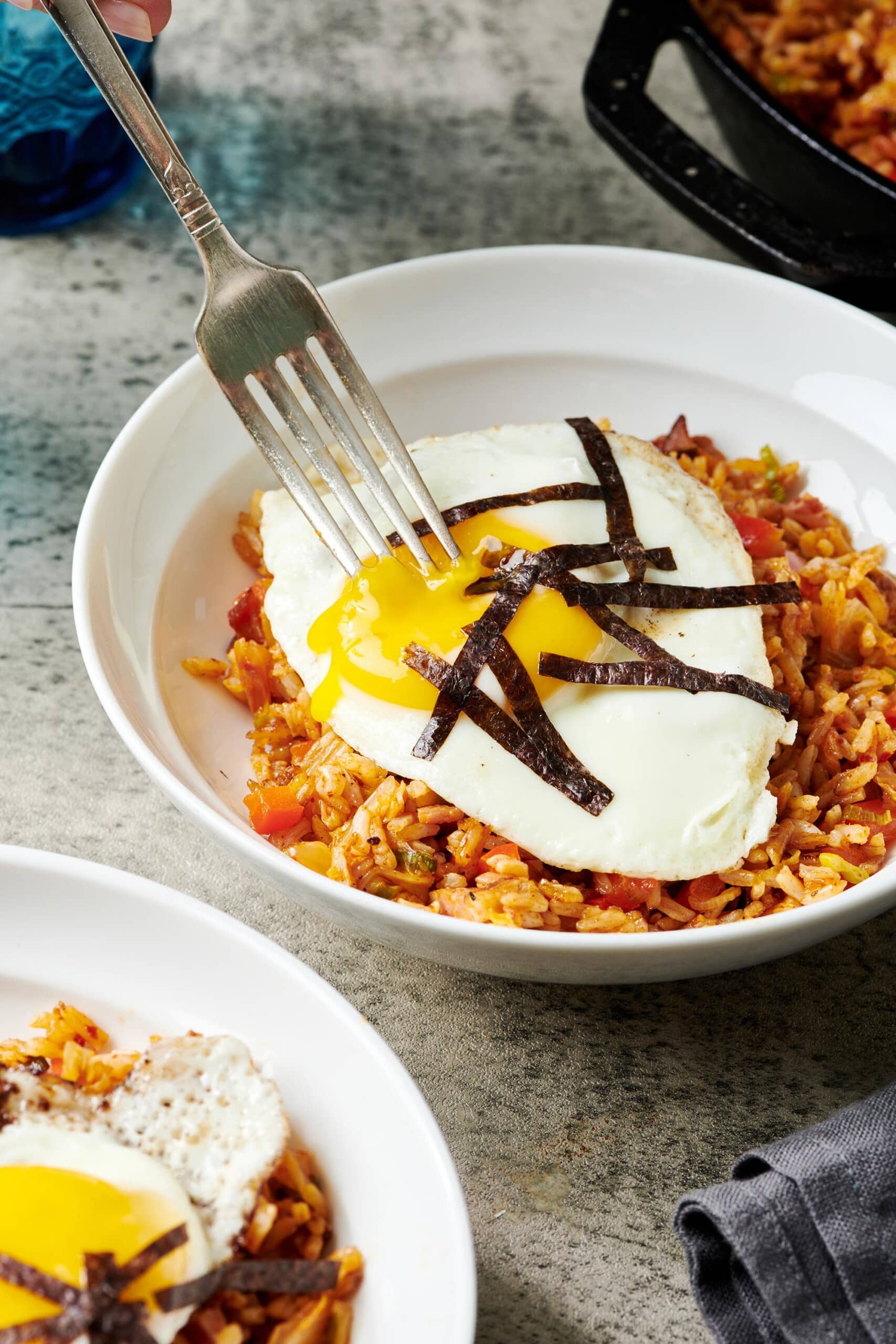
Kimchi Fried Rice: A mix of all of the flavors that make Korean food so amazing, and a great way to use leftover rice.
Tweet This
Kimchi in Fried Rice
Kimchi is a pickled vegetable cured in a mixture of onion, ginger, garlic, red pepper flakes, sugar, anchovies, or some other fermented fish or fish product. It’s an integral part of Korean food and cooking (or preserving) and has made its way into many other cuisines around Asia and the world. Napa cabbage is the most popular central vegetable to pickle for kimchi (sometimes mistakenly spelled kimchee!). Often, it is mixed with daikon and/or carrots.
Making your own kimchi is something I plan to tackle one day for sure, but meanwhile, lucky for us, it’s more and more easily available. Look for it in Korean or other Asian markets, or buy it online.
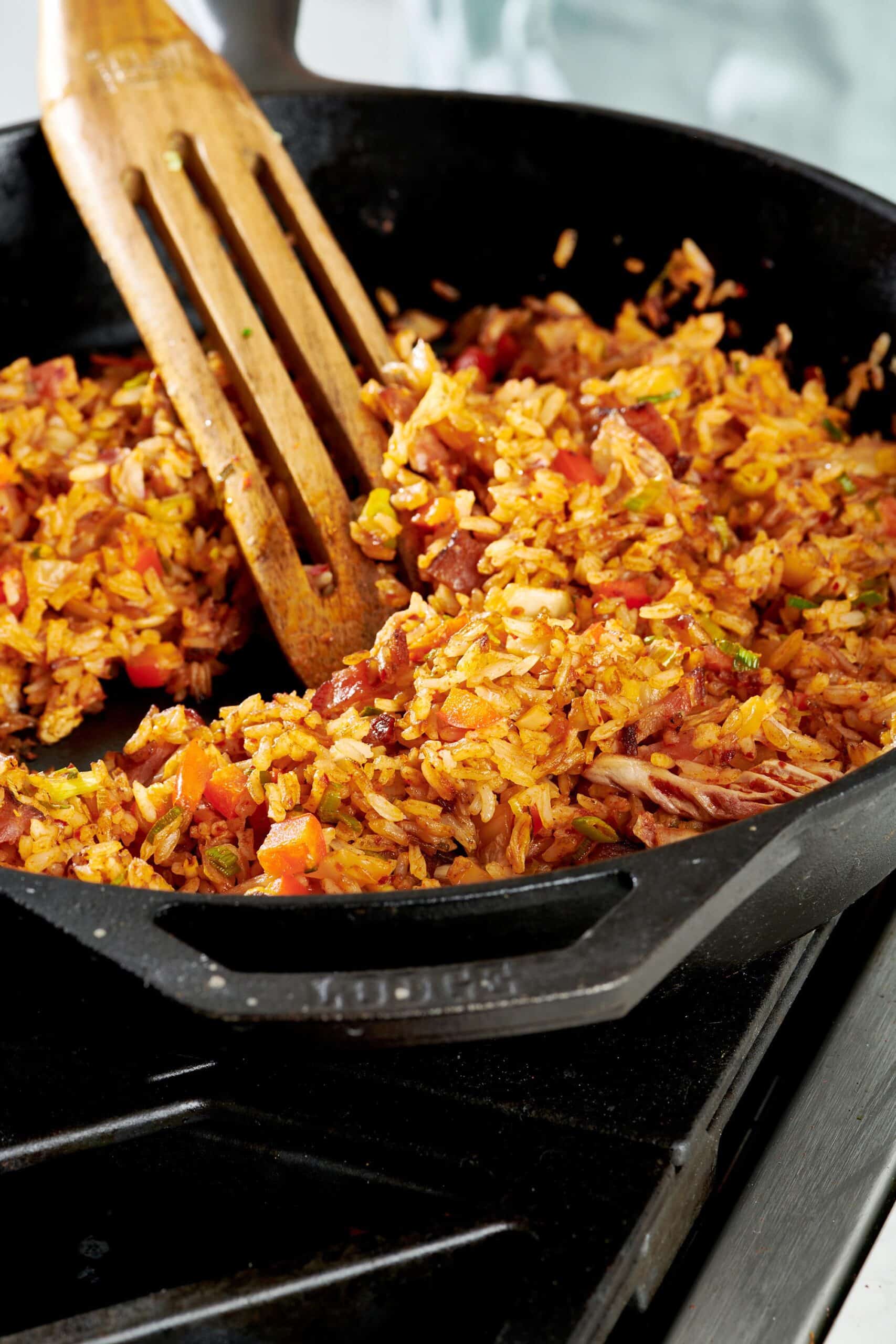
Spam in Kimchi Fried Rice
Although I do not call for Spam in this recipe, that is a popular addition even though it’s one of the more quintessentially American (not Eastern) packaged products.
Spam is a canned cooked pork “lunch meat.” The U.S. brought it over to Korea during the war, and many Koreans developed a taste for it, so it’s become a common sight in dishes like this stir-fried rice.
Since I’m not promising authenticity, I decided to pick my favorite pork product of all time, the king of pork (up for debate): bacon. Also, folks who grew up with this dish in their lives also have differing thoughts — so I’m sticking with bacon for now. But I also might add some Crispy Tofu in the future.
Nori in Fried Rice
Nori is a dried seaweed used mostly in Japanese cooking. But, like more and more Asian ingredients, it’s making its way into other countries and cuisines. You can buy it at various Asian markets, and as with everything, order it online.
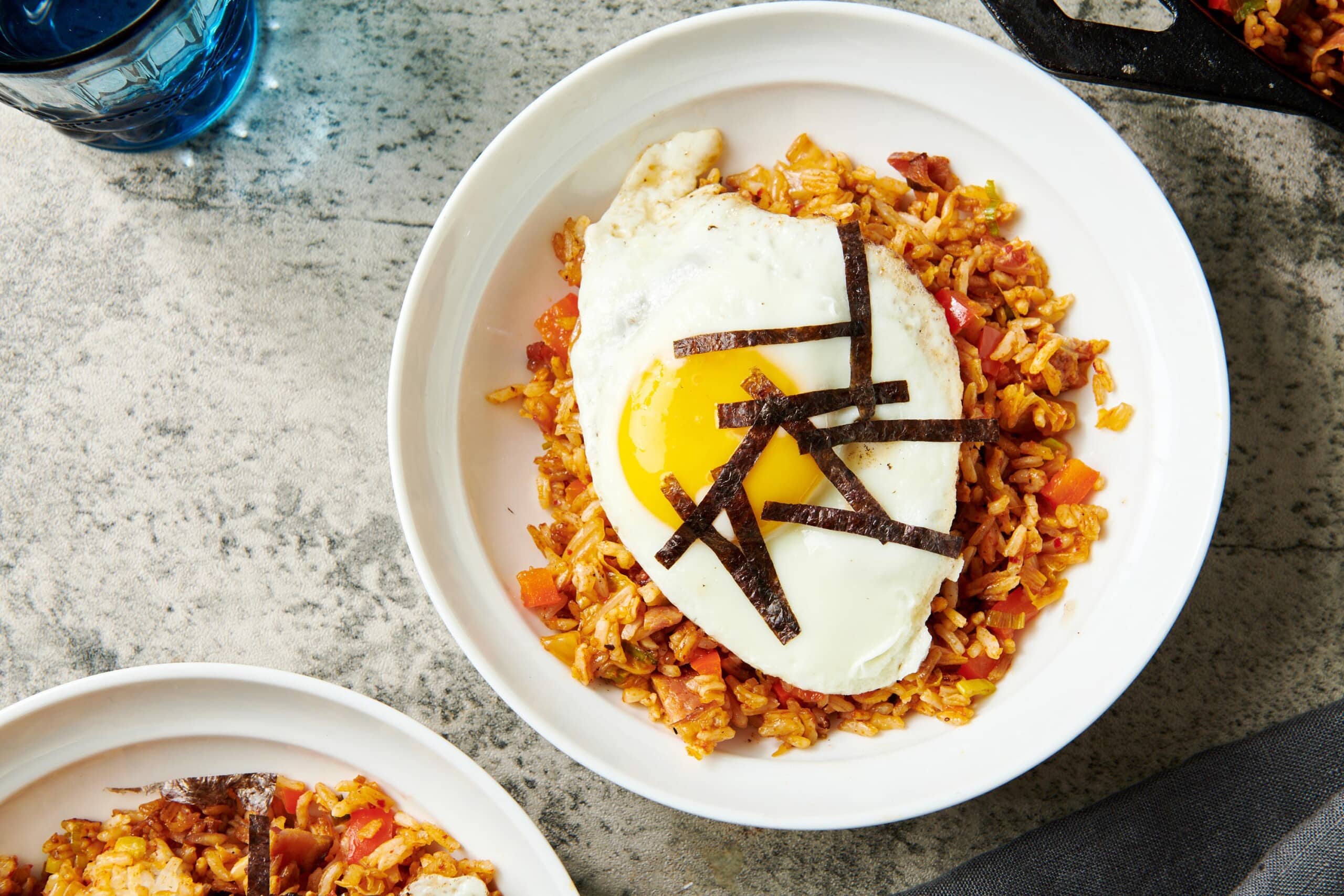
Eggs in Fried Rice
An egg is often placed on various rice and noodle dishes in myriad Asian cuisines. The immense pleasure of popping a runny yolk and having it blend into the dish itself, making it richer and silkier is hard to overstate.
Often when I make fried rice I scramble the eggs, and then mix them into the rice. The finished dish is punctuated by little pockets of scrambled egg. However, most Korean fried rice recipes that I have fallen for have the egg poached or fried, and then gently laid on top of the rice. If you want to go the scrambled egg route, this Vegetable Stir-Fried Rice recipe will help.
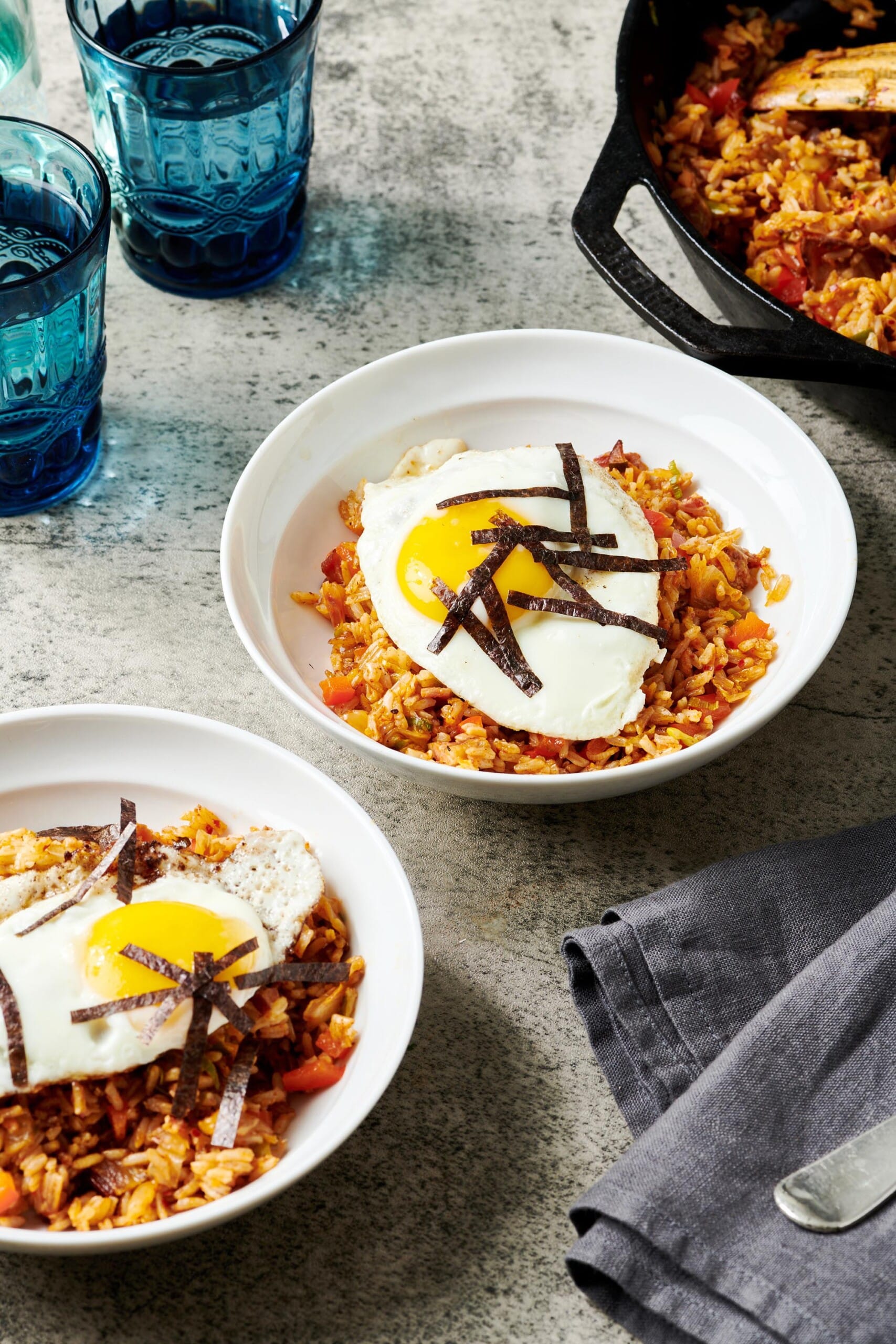
What to Serve With Kimchi Fried Rice
This is an all-in-one meal, especially with the egg for extra protein. But if you want to make this part of a larger spread, think about:
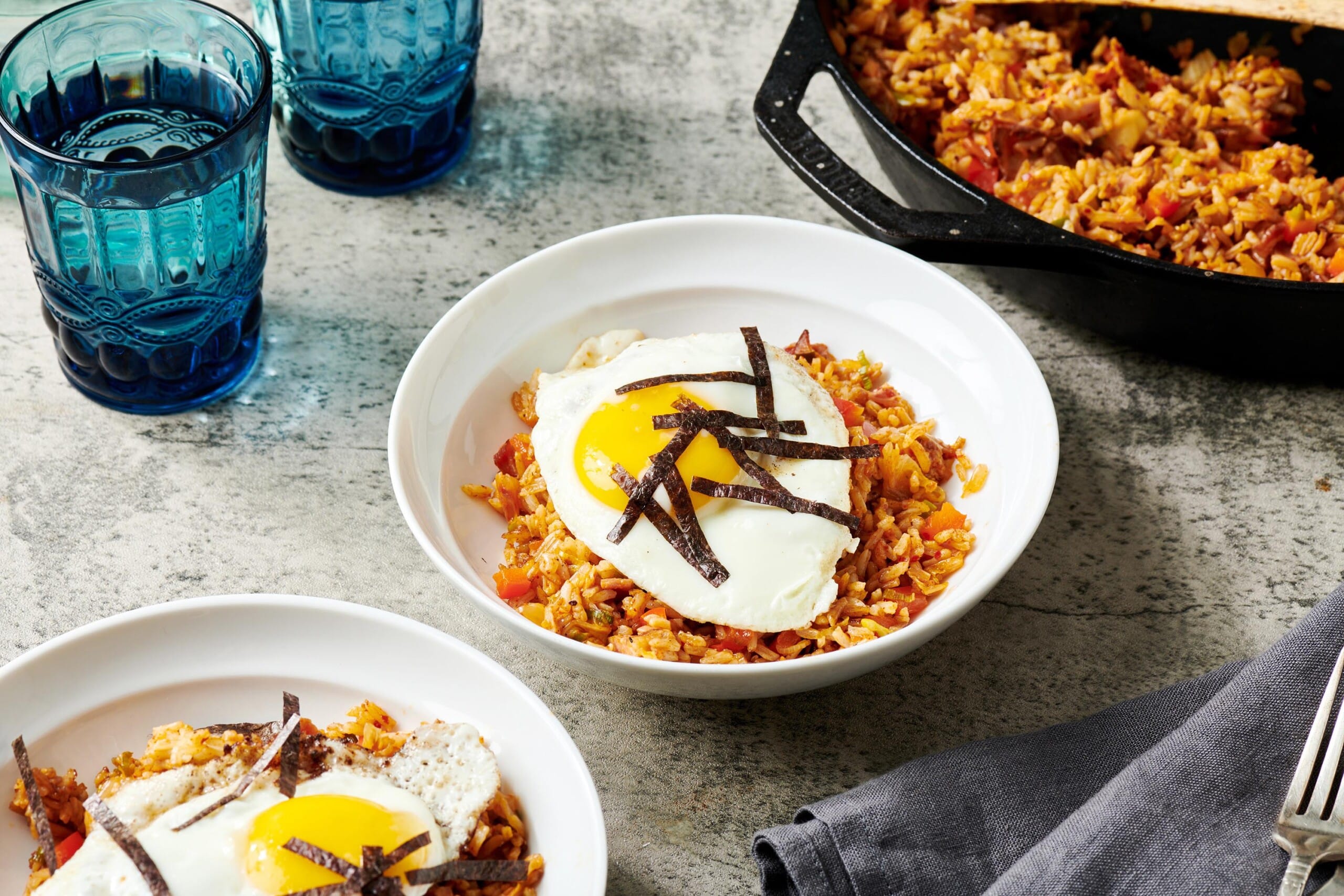
More Fried Rice Recipes
Pin this now to find it later
Pin It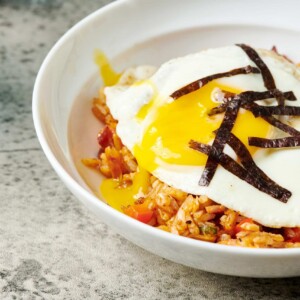
Kimchi Fried Rice
Ingredients
- 4 strips bacon
- 4 cups cooled cooked white or brown rice
- ¾ cup roughly chopped kimchi (see Note)
- ¾ cup sliced scallions (white and green parts; divided)
- ½ cup chopped red pepper
- 1 tablespoon soy sauce (preferably less-sodium)
- 2 teaspoons sesame oil
- 2 teaspoons unsalted butter
- 4 large eggs
- Kosher salt and freshly ground pepper (to taste)
To Garnish (optional):
- Slivered toasted nori (seaweed; see Note)
- Toasted sesame seeds (see Note)
Instructions
- Line a plate with paper towels. Place the bacon in a large skillet and cook over medium heat, turning a few times, until the bacon is crispy. Use tongs to transfer the bacon to the paper towels, and leave 1 tablespoon of the bacon fat in the skillet.
- Return the pan to medium-high heat and the kimchi. Stir for about 4 minutes, until the kimchi is nicely coated with bacon fat and hot throughout. Add the cooled rice and stir occasionally for about 5 more minutes, until the rice is hot. Add half of the scallions, red pepper, soy sauce, and sesame oil. Stir until everything is well blended and hot, another 2 to 3 minutes. Crumble the bacon and stir it in at the end.
- While the rice finishes cooking, in another large skillet, melt the butter over medium-high heat. Crack the eggs into the pan and cook until the whites are set, but the yolks are still runny.
- Divide the fried rice into 4 shallow bowls, and place a fried egg on top of each portion. Season with salt and pepper. Garnish the rest of the scallions, and the nori and sesame seeds if desired and serve hot.
